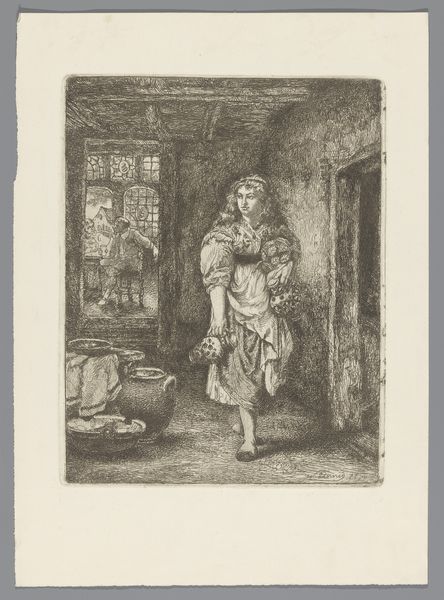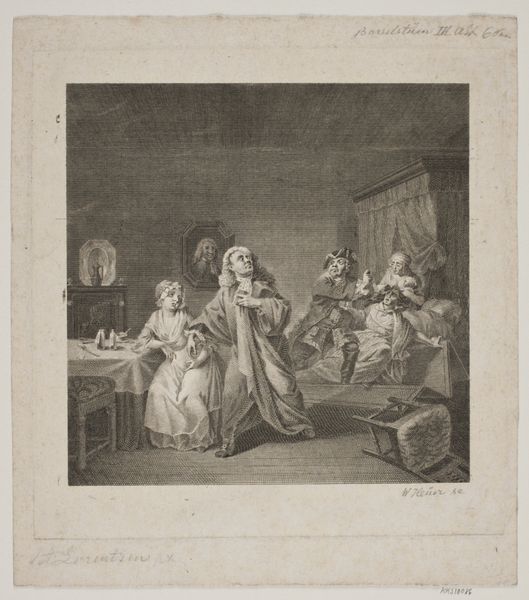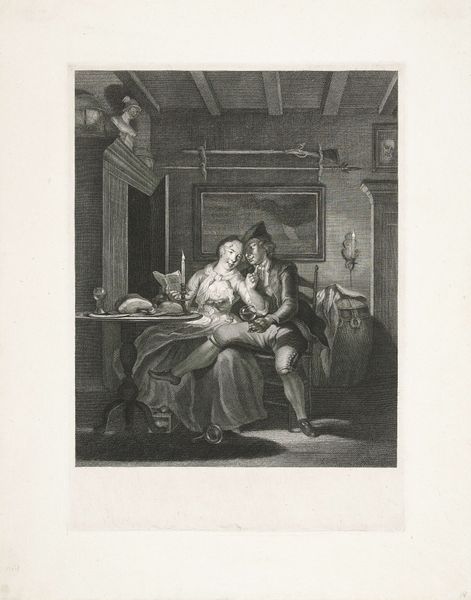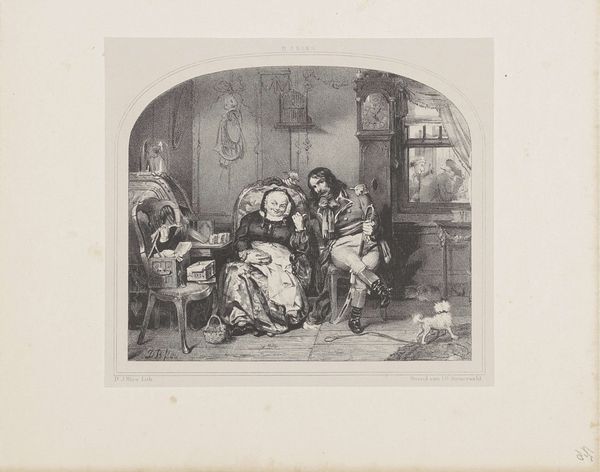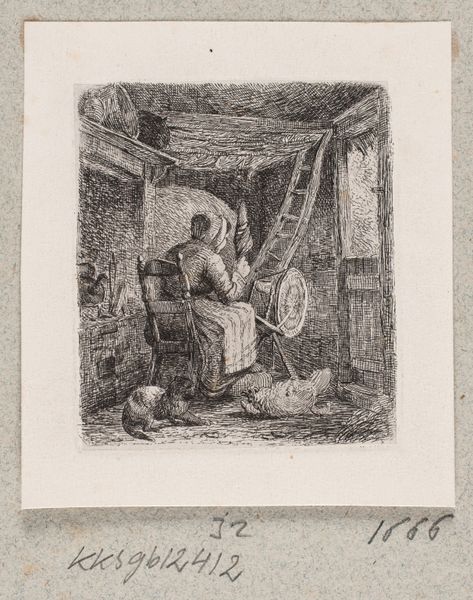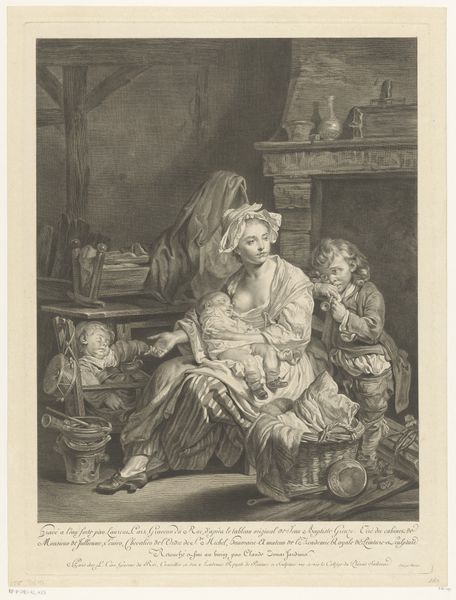
drawing, print, etching, ink, pen, engraving
#
portrait
#
drawing
# print
#
pen illustration
#
etching
#
pencil sketch
#
old engraving style
#
ink
#
pen-ink sketch
#
pen
#
genre-painting
#
history-painting
#
northern-renaissance
#
engraving
Dimensions: height 236 mm, width 161 mm
Copyright: Rijks Museum: Open Domain
Curator: Magdalena van de Passe, working in the Northern Renaissance tradition, created this etching and engraving titled "Winter" sometime between 1617 and 1634. It's currently housed at the Rijksmuseum. Editor: My initial impression is warmth... paradoxical for a piece titled "Winter," isn’t it? A mother and child, a cozy domestic scene...yet there’s an underlying feeling of melancholy. Curator: I agree. It presents a carefully constructed tableau of family life but layered with social and cultural symbolism reflective of its time. Note how the figure of Winter, the old woman, directs the viewers attention towards a mother breast feeding, likely intended to stress the burden of maternity as a consequence of fleeting youth in an era with low life expectancy. Editor: The textures created through the etching are amazing; look at that fur collar, the rendering of that dog's coat! It’s like you can feel the textures of everything here, right down to the flickering light from the fire. It adds an immediacy. Curator: Consider also how the seemingly "intimate scene" is juxtaposed with what we see beyond an archway--many seated figures, most likely men, suggesting social activity is off-limits. Or available only through the passing of time in life stages. There is commentary at work here that challenges our assumptions of a serene image of familial domesticity. Editor: It almost feels voyeuristic, doesn't it? This glimpse into a private space… almost forbidden. I can also not overlook the open fire to the left and all of the domestic supplies hanging up above; is it meant to express wealth and stature for the family depicted here? Curator: Such visual components are, in part, about delineating socio-economic boundaries, but also, they highlight cultural preoccupations with class, morality, and the lifecycle in 17th-century society. As an emblem of winter, our interpretation ought not conclude it offers us a peaceful picture. Rather, we must recognize this period as indicative of challenge and distress to common social harmony. Editor: Looking closer, I feel I’m uncovering more disquiet. "Winter," in its stark black and white, reflects not only on physical coldness, but emotional chilliness and burden too, perhaps, which I recognize on a more intuitive level. I see past the apparent charm and into its depths. Curator: Precisely. I would encourage all observers to view it from multiple angles. Its historical context can act as a kind of prism refracting complex intersections of gender, labour, and the passing of seasons, reflecting the realities of its period, but in ways very recognizable now.
Comments
No comments
Be the first to comment and join the conversation on the ultimate creative platform.



